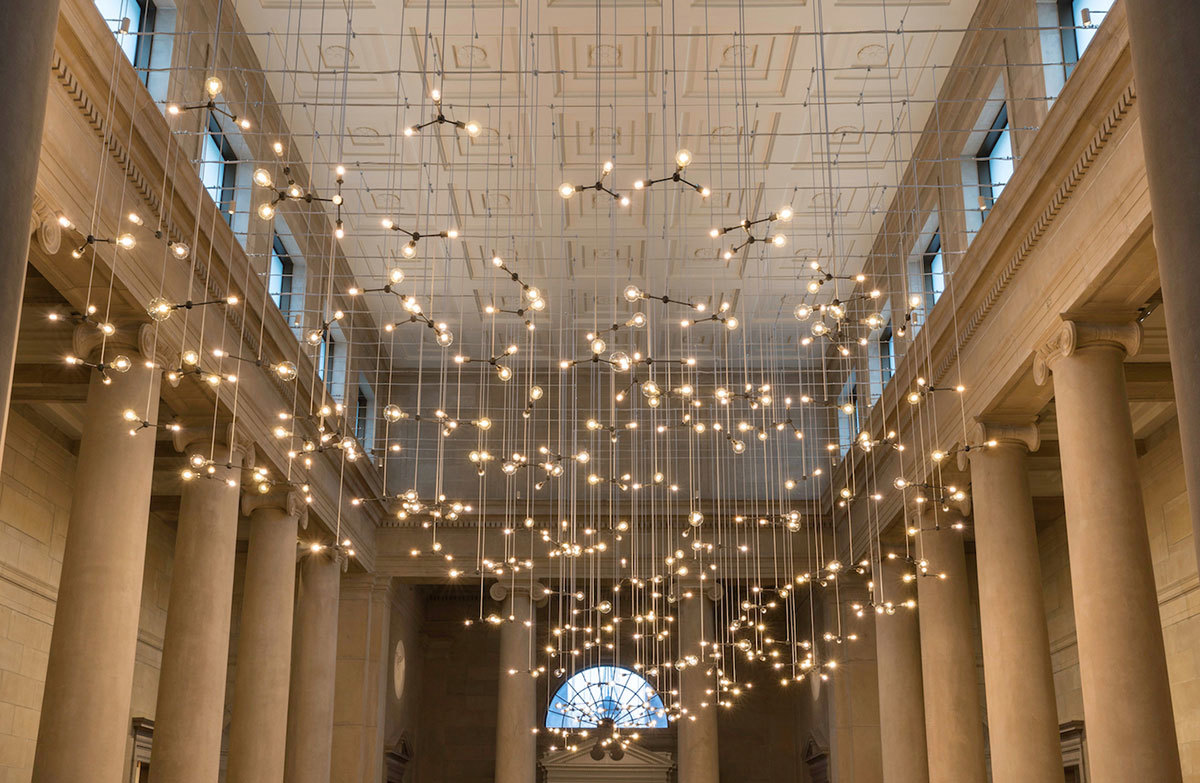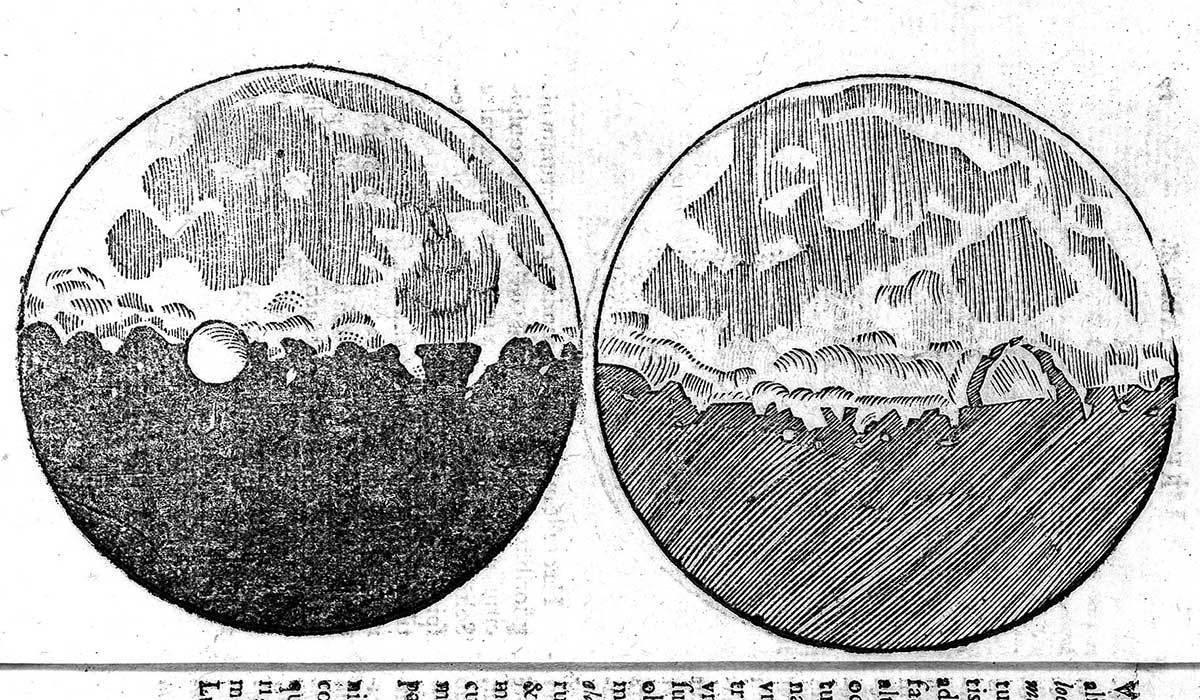
The Baltimore Museum of Art’s Fox Court, a rather solemn room with its towering, stately columns and echoing acoustics, just got a little warmer under the soft, golden glow of Spencer Finch’s much-anticipated Moon Dust (Apollo 17). The installation—417 light bulbs suspended in air between floor and ceiling—went on view on Feb. 21 and will remain a fixture in the space until the fall of 2024.
Anne Mannix-Brown, senior director of communications and marketing at the BMA, says she noticed a lot of foot traffic throughout opening day, and notes that you can see the installation from the street through a large window.
The piece spans 45 feet and represents the molecular structure of the moon dust that was collected during NASA’s Apollo 17 space mission. Bulbs in four sizes are meticulously arranged into their molecular structure, much like the three-dimensional models of colored atoms we studied in school science classes as children but on a much grander scale.
In 2012, Finch, based in Brooklyn, New York, put on view a more-permanent large-scale piece in Baltimore: a curtain wall made of glass that stretches across Johns Hopkins Hospital building, with blue and green hues reminiscent of Claude Monet’s work.
Joanne Gold, who with her husband Andy Stern loaned Moon Dust to the BMA, says she fell in love with the piece and jokes that she’d install it in her home if she had the space. “It’s a masterpiece . . . it’s so exquisite,” she tells a crowd of museum donors during an opening-night reception. After seeing it exhibited at the Venice Biennale in 2009, she purchased it in memory of her mother.
That year also marked the 400th anniversary of the beginning of Galileo’s detailed observations of the moon through a strong telescope he’d made—not a coincidence, as this anniversary got Finch thinking about the moon as subject.

Finch says he has a “conceptual interest in representing the world,” which is evidenced in his pieces that examine the Great Salt Lake, bee flight patterns, the Milky Way, pollen, and clouds.
He admits that it’s, as he puts it, “terrifying to put up a piece that’s so permanent”—especially when you don’t know exactly what it will look like until it’s completely installed and lit. But he likes its new home. “It’s very exciting to see it today . . . I feel like it works in this space,” he tells the audience that has gathered under its light. “You can feel like you’re sort of in this galaxy.”
As the artist points out, the piece is at once a microcosmic and macrocosmic abstract depiction of the cosmos, as it suggests the molecular structure of moon dust as viewed under a microscope but also fills the space overhead much like a vast, starry sky. He hopes it engages a sense of wonder, regardless of how it’s perceived.
When asked why his work is often specific to time and place, Finch says, “I find in that deep observation an opportunity for poetry,” and acknowledges 19th-century scientists alongside Emily Dickinson as inspirations. “Emily Dickinson looks at the natural world with an incredible intensity,” he says, “opening it up to something poetic and beautiful.”
